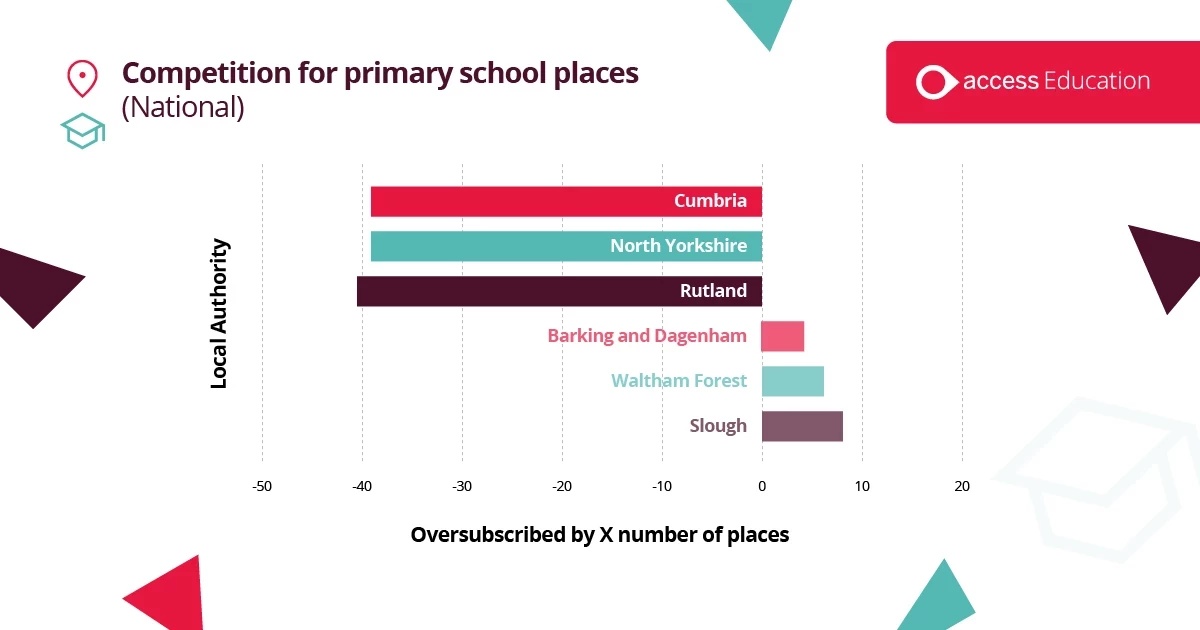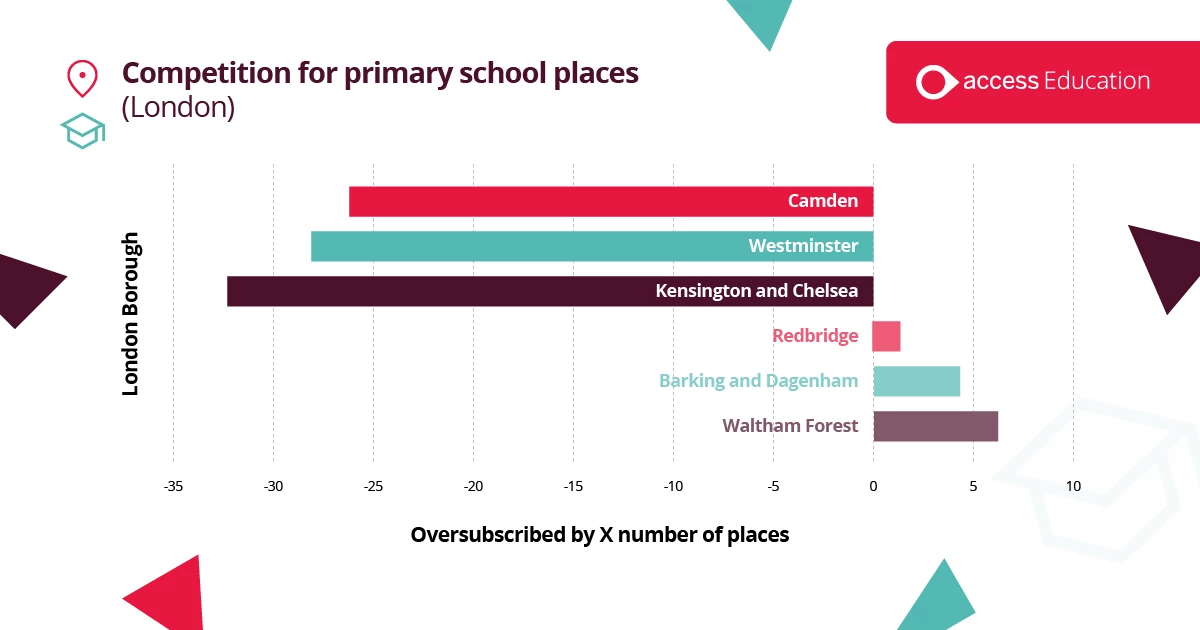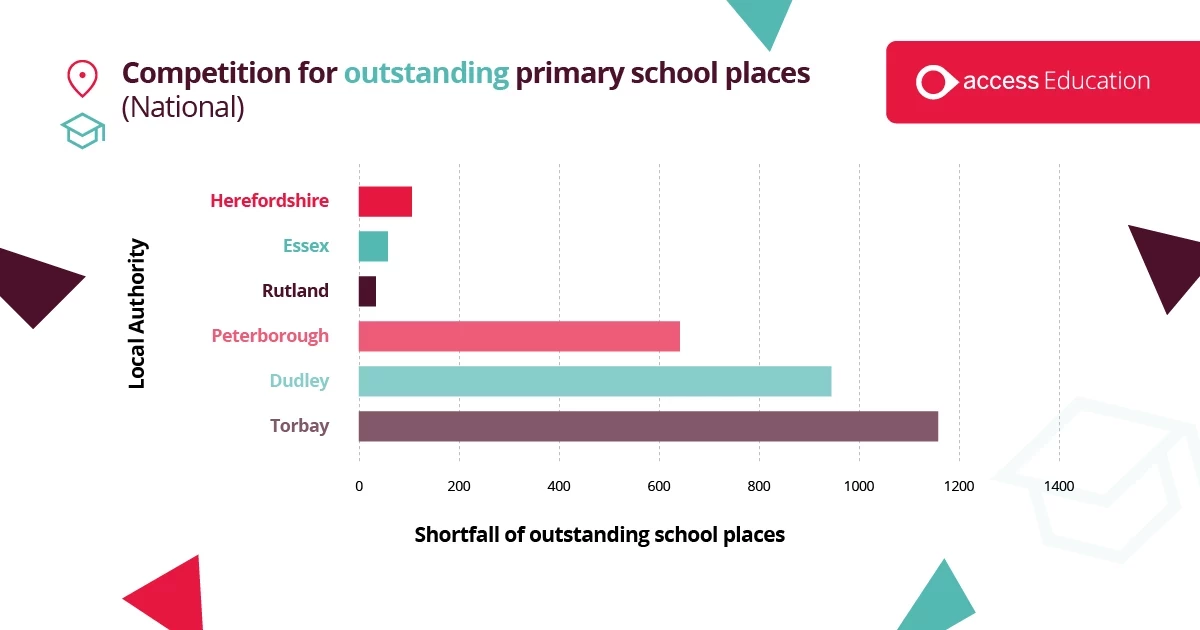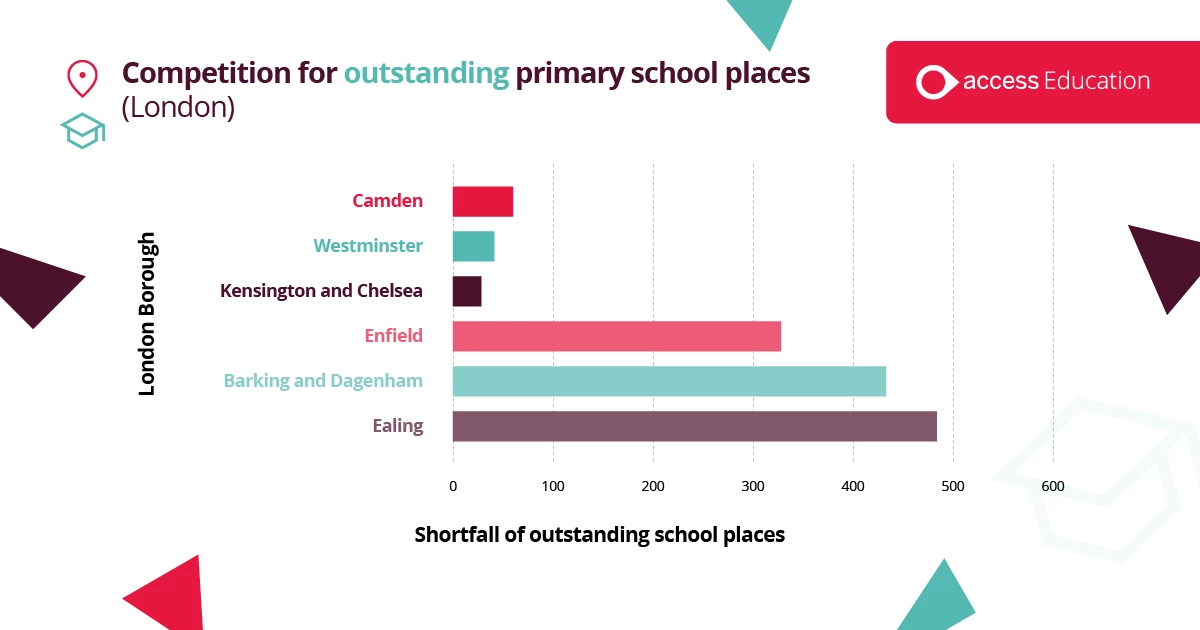- Customer stories
-
- Why Access Education?
- About Access Education
- Guides & webinars
- Meet our experts
- Blogs
Which area is most competitive for primary school admissions?
Our ‘school squeeze’ campaign crunches the numbers to get an insight into which areas have the highest demand for primary school places in 2023, and what this means for teachers and parents.
As the deadline for primary school applications draws closer, many parents will be rushing to make one of the most important decisions of their children’s younger years.
The wait to find out if parents succeeded in securing their first-choice school can be agonising, even if applications were submitted as soon as admissions opened in September,
It’s equally as difficult for teachers and school business leaders who are left wondering how over – or under – subscribed their classrooms will be for the 2023/24 school year. And the wide-ranging knock on effect of this can have on everything from the funding schools receive to levels of staff, which require different school management and curriculum planning techniques.

Which region has the biggest ‘school squeeze’?
Last February, analysis by Schools Week predicted that some areas in the UK could be experiencing growing surplus places in their primary schools as the early-2000s population boom reaches secondary school age. In Walsall, for example, a shortfall of secondary school places has already been predicted.
A small primary school in a rural North Yorkshire village is a rare case with zero pupils on its roll since September 2022, but what is happening in other areas across the UK?
Our ‘school squeeze’ campaign suggests that the broader picture across the UK is much more varied.
To understand which areas are most squeezed (where there are the most children per number of schools in their local authority) and where parents have the best access to their first choice primary schools, we looked at the number of children set to attend primary school in the 2023/24 academic year, and then compared this to the number of primary schools per local authority.
Areas in the UK with the most competition for primary school places
South East town Slough, on the outskirts of West London, is the most squeezed location. With only 38 schools within the local authority area there are, on average, 2,340 children moving up to primary education in the next academic year, which is 62 children per school. To provide some context, the average infant school class size in 2022 is 26.7 - meaning a two-form intake would be between 53 and 54 pupils - a shortfall for Slough of between 8 and 9 places.
This is followed by Waltham Forest, which is the most squeezed London Borough and the second most squeezed across the UK. Despite having 66 primary schools in the local authority area, almost 60 children will be competing for a place per school with 3,936 children set to begin primary school next year.
Within the top 20 most squeezed locations, Enfield and Ealing both have 96 schools per local authority, which is the highest number of schools. on the list – but with nearly 50 children per school getting ready to enter primary education, competition is high.

Which region has the best access to primary schools?
While the most squeezed locations are dominated by Southern areas, towns and cities from the North, Midlands, Yorkshire and coastal areas are less competitive places to secure admission at a first-choice school – and where teachers might be left with the most surplus places.
England’s smallest historic county, Rutland, offers the best access to primary school places, with just 309 children entering each of the region’s 24 schools next year. This equates to 13 per school, on average. This is followed by North Yorkshire, with 14 children to 384 schools, and Cumbria, also with 14 children to each of its 310 schools.
Kensington and Chelsea, unlike some areas of West London, features in the top 20 places with the best access, with an average of 20 children in the area per 61 schools.
|
Local authority |
Average number of children set to begin primary school in 2023/24 |
Number of primary schools in local authority |
Number of children entering primary school in 23/24 per school |
|
Rutland |
309 |
24 |
12.9 |
|
North Yorkshire |
5463.5 |
384 |
14.2 |
|
Cumbria |
4418 |
310 |
14.3 |
|
Northumberland |
2768 |
181 |
15.3 |
|
Dorset |
2952.5 |
179 |
16.5 |
|
Shropshire |
2814.5 |
164 |
17.2 |
|
Devon |
6986 |
400 |
17.5 |
|
County Durham |
4889 |
279 |
17.5 |
|
Derbyshire |
7589.5 |
430 |
17.7 |
|
Somerset |
5350.5 |
302 |
17.7 |
|
Bath and North East Somerset |
1731 |
94 |
18.4 |
|
Herefordshire |
1677.5 |
91 |
18.4 |
|
Cornwall |
5004.5 |
265 |
18.9 |
|
Norfolk |
8391.5 |
428 |
19.6 |
|
Lincolnshire |
6984.5 |
347 |
20.1 |
|
Wiltshire |
5113.5 |
254 |
20.1 |
|
Kensington and Chelsea |
1228.5 |
61 |
20.1 |
|
East Riding of Yorkshire |
2888.5 |
143 |
20.2 |
|
Staffordshire |
8604.5 |
425 |
20.2 |
|
Calderdale |
2232.5 |
110 |
20.3 |
London boroughs with the most pupils-per-school in the 2023/24 academic year
Despite fallout from Brexit and Covid-19 prompting many families to reconsider living in the capital city, primary schools in many London boroughs, including Tower Hamlets, are still feeling the squeeze, according to our data.

While Waltham Forest topped the regional list, East London’s Barking and Dagenham is the second-most competitive London borough for primary school places. There are 59 primary schools in the area, and we estimate that there are around 3,407 children ready to move up to primary education next year, which is 58 children per school.
The situation is reversed in another East London borough, however. Hackey is sixth on the list, with 90 schools in the area and an average of 36 children per school. Kensington and Chelsea is the best overall, closely followed by Westminster.
|
Local authority |
Average number of children set to begin primary school in 2023/24 |
Number of primary schools in local authority |
Number of children entering primary school in 23/24 per school |
|
Kensington and Chelsea |
1228.5 |
61 |
20.1 |
|
Westminster |
1694 |
67 |
25.3 |
|
Camden |
2033 |
75 |
27.1 |
|
Hammersmith and Fulham |
1818 |
62 |
29.3 |
|
Richmond upon Thames |
2183.5 |
69 |
31.6 |
|
Hackney |
3279.5 |
90 |
36.4 |
|
Haringey |
3040.5 |
83 |
36.6 |
|
Barnet |
4815.5 |
130 |
37.0 |
|
Southwark |
3339.5 |
89 |
37.5 |
|
Kingston upon Thames |
1880 |
50 |
37.6 |
Where in the UK can parents access an Outstanding education?
Any area with a large number of Ofsted-rated ‘Outstanding’ schools can attract families when they’re looking to relocate, which can help schools to keep pupil numbers high.
While Torbay, in Devon, only has one Outstanding primary school, there are 1,212 children set to begin primary school in the next academic year, making it the most-squeezed area for Outstanding primary schools. Dudley has seven Outstanding primary schools, with 998 children per Outstanding school – with the average primary school class size being 26.7, this gives parents a 10.4% chance of making it into one of those schools, based on each school having a two-form cohort.

Rutland offers parents the best access to primary schools overall, including Outstanding schools. There are five Outstanding schools in the local authority, and only 62 children per school. Although 16,611 children are set to enter primary school education next year, Essex has 73 Outstanding schools which equals around 68 children per school.
Up North in South Tyneside, there are 94 children per 16 Outstanding schools which makes it sixth on our list of areas with the best access to Outstanding schools, closely followed by Trafford and Northumberland.

Navigating the effects of pupil numbers with technology
While a ‘squeezed’ school area can be bad news for parents looking to secure their first place, there are advantages for the schools themselves, as well as challenges.
For local authority schools, a healthy admissions register can help to secure vital funding. Doing so will be essential for all schools amid last year’s landmark rise in teacher salaries, and the first winter since the energy crisis hit.
Head teachers with busy classrooms should pay particular attention to the wellbeing of their staff, too. Ofsted recently warned of the risk that the education sector’s workforce crisis poses. Reducing unnecessary stress on existing staff members will be key, while also upholding great standards of education. By introducing digital revision tools, schools can manage pupils’ learning, while supporting their staff – and with school HR software teacher wellbeing can be effectively monitored.
Schools with pupil numbers that often vary from term to term would benefit from curriculum planning software. This is true whether it’s a school in Slough wondering if they need to hire new staff to teach their volume of new starters, or a school business manager in Rutland wanting to know how their new budget can meet the needs of pupils.
Private schools weren’t included in our data collection campaign, but the challenges faced during the admissions process shouldn’t be ignored. When Latymer Upper School invested in a new parent engagement software, its admissions registrar found that she saved around 100 hours of time in the admissions process, while also improving parent communication by updating progress in real time.
If you’re interested in finding out more about our systems designed exclusively for schools, get in touch with our expert team to discuss your needs.
Methodology for data collection:
- We based the number of children set to enter primary school in 2023/24 using the most recent Census, which is based on information as of 21 March 2021.
- In order to establish the number of children due to be turning five between 1 September 2023 and 31 August 2024 (eligible for entry into Reception), we took the average number based on count of 1-year olds and 2-year olds at the time of the Census.
- The number of primary schools (and outstanding primary schools) were taken using the Government's School Performance Checker
- For local authorities where county council’s were responsible for the management and running of primary schools, the equivalent Census and school location stats were combined together. For example, for West Sussex this included local council data for Adur, Arun, Chichester, Crawley, Horsham, Mid Sussex and Worthing.
